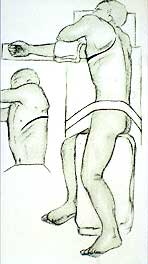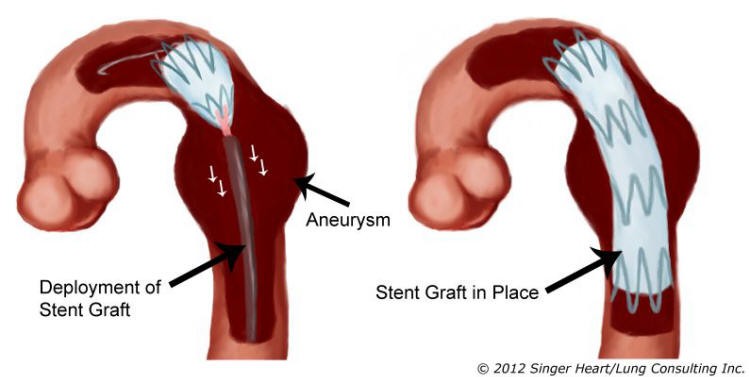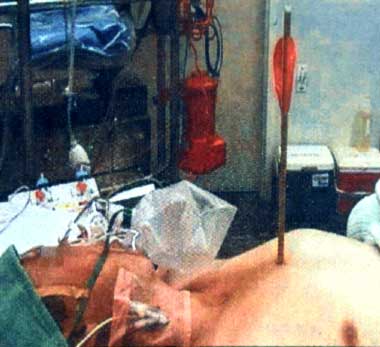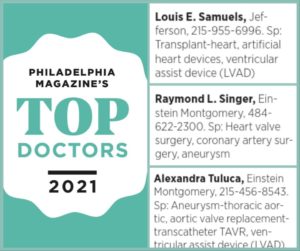Believe it or not, the photo below is from a real case report. What’s amazing about this case is that the wound was self-inflicted. What’s even more amazing is that the patient survived!
Traumatic Aortic Transection (Blunt Traumatic Tear of the Aorta)
One of the most serious injuries that we see to the cardiovascular system is a blunt injury to the aorta, causing it to literally tear in half.
Typically the tear is located in the descending aorta, just distal to the take off of the left subclavian artery that goes to the left arm as shown above.
The most common cause of this injury is from a person who is an unrestrained driver or passenger in a car, meaning that they were not wearing their seatbelt.
It turns out that there is a ligament that attaches to the aorta just at the level of the left subclavian artery, thus fixing the artery at this point. In a care accident, or any deceleration injury, the part of the aorta attached to the ligament stays still while the more distal aorta continues to move thus causing tremendous stress on the artery and tearing it at this location.
To the left is an arteriogram showing the torn aorta and the blood leaking out.
The mortality rate from this injury is very high. Unfortunately, most patients with this injury die at the scene of the accident.
However, if the bleeding is contained, and if the patient can be rapidly transferred to a Level I Trauma Center such as Lehigh Valley Hospital, then the patient may have a chance to survive.
In patients who arrive at our trauma center in stable condition, our success rate is well over 90%. Even so, it is a high risk procedure that should only be done by experienced cardiothoracic surgeons.
Surgery for Aortic Transection
Immediate surgery through the left chest (thoracotomy) is needed.

Thoracotomy
Usually, the torn aorta needs to be replaced with an inter-position tube graft as shown below.

Inter-Position Tube Graft
An alternative surgical option – TEVAR:

TEVAR
Complications
Modern techniques using the heart-lung machine have greatly reduced the complications from this procedure, but two serious complications still challenge even the most experienced heart surgeons:
- Paralysis of the left vocal cord from injury to the left recurrent laryngeal nerve that lies lies next to the aorta.
- And, even more devastating when it occurs, paralysis of the lower extremities due to a loss of blood supply to the spinal cord during surgery.
As in other areas of cardiovascular surgery, there is early research on the use of stents for trauma to the aorta. However, at this time, the standard of care with the most proven results is the surgery that I outlined above.





